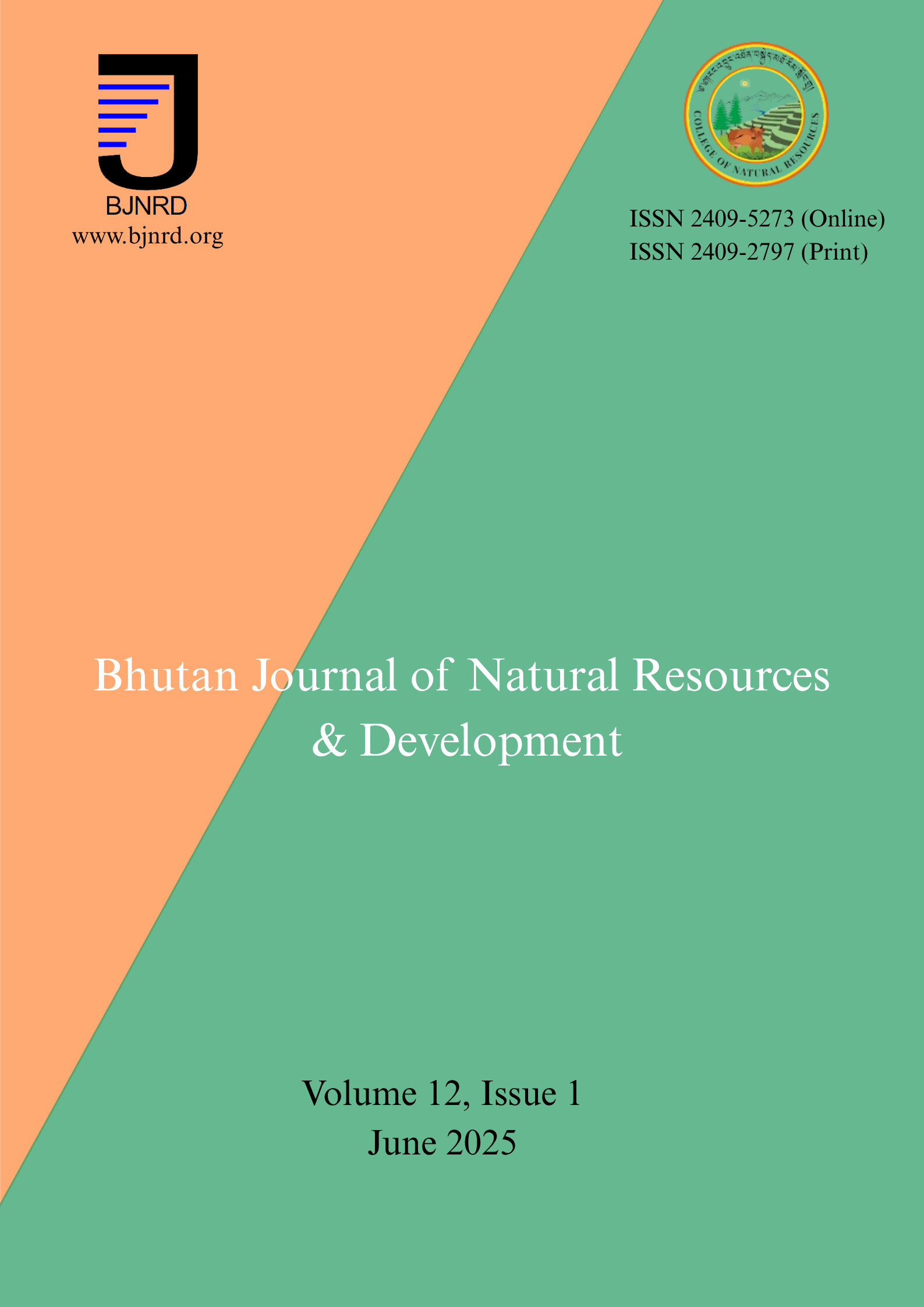Habitat Preference and Foraging Technique of River Lapwing (Vanellus duvaucelii Lesson, 1826) in Punatsangchhu River, Bhutan
Keywords:
Foraging technique, foraging behavior, habitat preference, River Lapwing, sandbarAbstract
The River Lapwing is experiencing population decline and has recently been categorised under near threatened. This study examined the habitat preferences and foraging patterns of River Lapwing in the Punatsangchhu River in Bhutan. A systematic line transect method covering 123 km, incorporating 42 sampling stations, was deployed to observe foraging technique and foraging success of River Lapwing. In addition, habitat parameters, water parameters and macroinvertebrate were recorded to observe their relationship to River Lapwing occurrence. The present study results indicated that the River Lapwing occurrence correlated with higher macroinvertebrate diversity (H’ = 1.93) compared to those where the River Lapwing did not occur. Sandbars were the primary foraging ground for River Lapwings, and a moderate positive relationship was observed between the sandbar used by the River Lapwing and the occurrence of the River Lapwing (r = 0.44, p = 0.00). However, human disturbance along the river and the occurrence of River Lapwing (r = -0.34, p = 0.00) had a moderate negative relationship. Among the five foraging techniques used by River Lapwing across the study area, walk-halt-peck (37.96%) was the highest, followed by walk-halt-probe (30.56%). Moreover, the River Lapwing foraging success was more than half (62.96 ± 9.53%) of the total attempts. Thus, River Lapwing occurrence was positively associated with higher macroinvertebrate diversity and the availability of sandbars along the river, while human disturbance negatively impacted their occurrence.




